博文
Computational Urban Science 佳文推荐
||

《计算城市科学》国际期刊(Computational Urban Science)隆重向读者推荐本刊创刊至今最受关注的五篇文章,欢迎阅读。
第一篇
The Linear City: illustrating the logic of spatial equilibrium
带形城市:说明空间均衡的逻辑
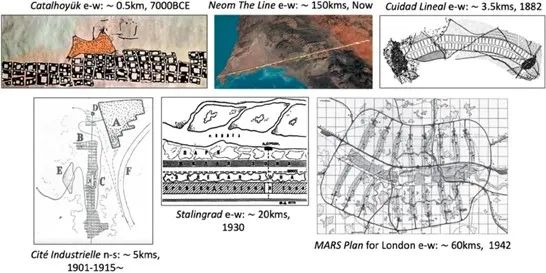
作者:Michael Batty
Linear cities where activity is spread out along a transportation line, aim to offer the highest levels of accessibility to their adjacent populations as well as to the countryside. These city forms are popular amongst architects and planners in envisioning ideal cities but they are difficult to implement as they involve strict controls on development which often ignore human behaviour associated with where we locate and how we move. We briefly explore the history of these ideas, noting the latest proposal to build a 170 km city called Neom in north west Saudi Arabia, a plan that has attracted considerable criticism for its apparent ignorance of how actual cities grow and evolve. We use a standard model of human mobility based on gravitational principles to define a set of equilibrium conditions that illustrate how a theoretical city on a line would, without any controls, successively adapt to such a new equilibrium. First, we represent the city on a line, showing how its population moves to an equilibrium along the line, and then we generalise this to a bigger two-dimensional space where the original line cutting across the grid evolves as populations maximise their accessibility over the entire space. In this two-dimensional world, we simulate different forms that reflect a balance of centralising versus decentralising forces, showing the power of such equilibria in destroying any idealised form. This approach informs our thinking about how far idealised future cities can depart from formal plans of the kind that the linear city imposes.
带形城市的活动沿着交通线分布,旨在为其邻近人口和乡村提供最高水平的可达性。这些城市形式在建筑师和规划师的理想城市设想中很受欢迎,但它们很难实施,因为它们涉及对发展的严格控制,这往往忽略了与我们在哪里和如何移动相关的人类行为。我们简要探讨了这些想法的历史,注意到在沙特阿拉伯西北部建设一个170公里的城市Neom的最新提议,该计划因明显忽视实际城市如何发展和演变而招致了相当多的批评。我们使用一个基于重力原理的人类流动标准模型来定义一组平衡条件,来说明带形的理论城市在没有任何控制的情况下如何连续适应这种新的平衡。首先,我们用一条线来表示城市,展示它的人口如何沿着这条线移动到平衡,然后我们将其推广到一个更大的二维空间,在这个空间中,穿过网格的原始线随着人口在整个空间内的可达性最大化而演变。在这个二维世界中,我们模拟了不同的形式,这些形式反映了集中力量与分散力量的平衡,展示了这种平衡在摧毁任何理想化形式中的力量。这种方法让我们思考理想的未来城市可以在多大程度上偏离带形城市强加的那种正式规划。
引用格式:Batty, M. The Linear City: illustrating the logic of spatial equilibrium. Comput. Urban Sci. 2, 8 (2022).
https://link.springer.com/article/10.1007/s43762-022-00036-z
第二篇
Smart city based on digital twins
基于数字孪生的智慧城市
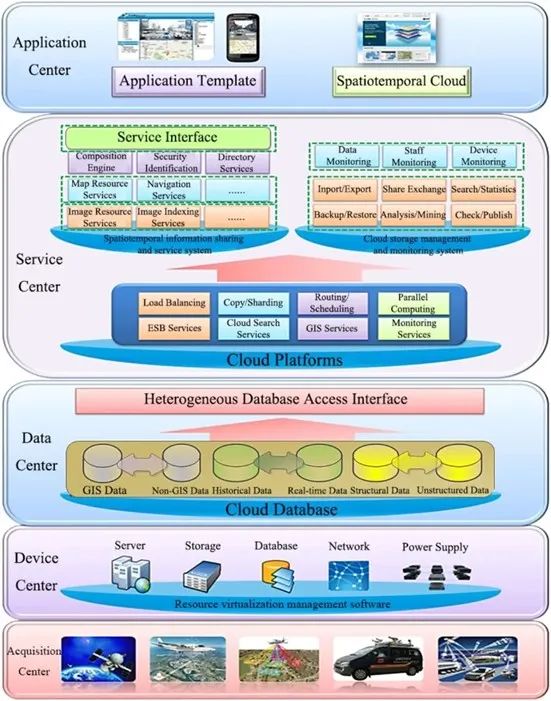
作者:Deren Li, Wenbo Yu & Zhenfeng Shao
Digital twins are considered to be a new starting point for today’s smart city construction. This paper defines the concepts of digital twins and digital twin cities, discusses the relationship between digital twins and smart cities, analyzes the characteristics of smart cities based on digital twins, and focuses on the five main applications of smart cities based on digital twins. Finally, we discuss the future development of smart cities based on digital twins.
数字孪生被认为是当今智慧城市建设的新起点。本文界定了数字孪生和数字孪生城市的概念,讨论了数字孪生与智慧城市的关系,分析了基于数字孪生智慧城市的特点,重点介绍了基于数字孪生智慧城市的五大应用。最后,探讨了基于数字孪生智慧城市的未来发展。
引用格式:Li, D., Yu, W. & Shao, Z. Smart city based on digital twins. Comput. Urban Sci. 1, 4 (2021).
https://link.springer.com/article/10.1007/s43762-021-00005-y
第三篇
Exploring temporal varying demographic and economic disparities in COVID-19 infections in four U.S. areas: based on OLS, GWR, and random forest models
基于OLS、GWR和随机森林模型探讨美国四个地区人口和经济差异下COVID-19感染病例的时间变化
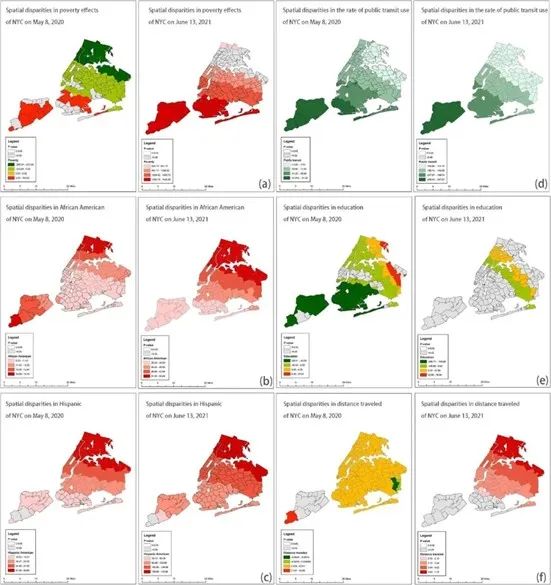
作者:Junfeng Jiao, Yefu Chen & Amin Azimian
Although studies have previously investigated the spatial factors of COVID-19, most of them were conducted at a low resolution and chose to limit their study areas to high-density urbanized regions. Hence, this study aims to investigate the economic-demographic disparities in COVID-19 infections and their spatial-temporal patterns in areas with different population densities in the United States. In particular, we examined the relationships between demographic and economic factors and COVID-19 density using ordinary least squares, geographically weighted regression analyses, and random forest based on zip code-level data of four regions in the United States. Our results indicated that the demographic and economic disparities are significant. Moreover, several areas with disadvantaged groups were found to be at high risk of COVID-19 infection, and their infection risk changed at different pandemic periods. The findings of this study can contribute to the planning of public health services, such as the adoption of smarter and comprehensive policies for allocating economic recovery resources and vaccines during a public health crisis.
尽管之前的研究已经调查了COVID-19的空间因素,但大多数研究都是在低分辨率下进行的,并选择将研究区域限制在高密度的城市化地区。因此,本研究旨在探讨美国不同人口密度地区COVID-19感染病例的经济人口差异及其时空格局。特别是,我们基于美国四个地区的邮政编码区级别数据,使用普通最小二乘法、地理加权回归分析和随机森林分析了人口和经济因素与 COVID-19 密度之间的关系。我们的结果表明,人口和经济差异是显著的。此外,一些弱势群体的地区被发现感染COVID-19的风险很高,且在不同的大流行阶段,其感染风险有所变化。这项研究的结果有助于公共卫生服务的规划,例如在公共卫生危机期间采取更明智、更全面的政策来分配经济复苏资源和疫苗。
引用格式:Jiao, J., Chen, Y. & Azimian, A. Exploring temporal varying demographic and economic disparities in COVID-19 infections in four U.S. areas: based on OLS, GWR, and random forest models. Comput. Urban Sci. 1, 27 (2021).
https://link.springer.com/article/10.1007/s43762-021-00028-5
第四篇
Street life and pedestrian activities in smart cities: opportunities and challenges for computational urban science
智慧城市中的街道生活和行人活动:计算城市科学的机遇和挑战
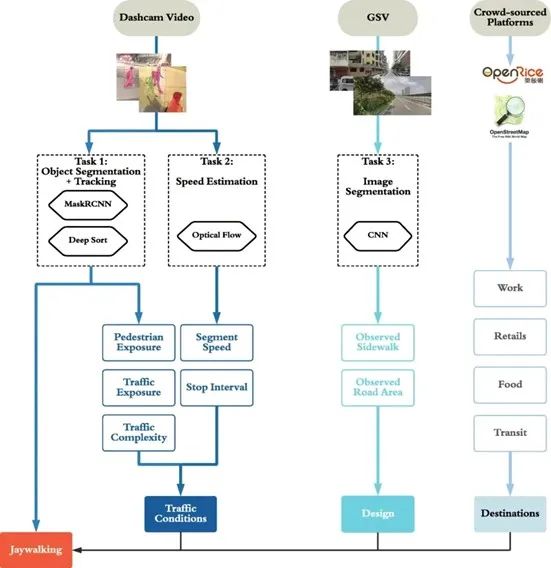
作者:Zhuangyuan Fan & Becky P.Y. Loo
Ongoing efforts among cities to reinvigorate streets have encouraged innovations in using smart data to understand pedestrian activities. Empowered by advanced algorithms and computation power, data from smartphone applications, GPS devices, video cameras, and other forms of sensors can help better understand and promote street life and pedestrian activities. Through adopting a pedestrian-oriented and place-based approach, this paper reviews the major environmental components, pedestrian behavior, and sources of smart data in advancing this field of computational urban science. Responding to the identified research gap, a case study that hybridizes different smart data to understand pedestrian jaywalking as a reflection of urban spaces that need further improvement is presented. Finally, some major research challenges and directions are also highlighted.
城市为振兴街道所做的持续努力鼓励了使用智能数据了解行人活动的创新。借助先进的算法和计算能力,来自智能手机应用程序、GPS设备、摄像机和其他形式的传感器的数据可以帮助更好地了解和促进街道生活和行人活动。本文采用以行人为中心、以场所为基础的方法,综述了推动计算城市科学发展的主要环境要素、行人行为和智能数据来源。针对已发现的研究差距,提出了一个案例研究,该案例研究混合了不同的智能数据,以将行人乱穿马路理解为需要进一步改进的城市空间的反映。最后,还强调了一些主要的研究挑战和方向。
引用格式:Fan, Z., Loo, B.P. Street life and pedestrian activities in smart cities: opportunities and challenges for computational urban science. Comput. Urban Sci. 1, 26 (2021).
https://link.springer.com/article/10.1007/s43762-021-00024-9
第五篇
“What should be computed” for supporting post-pandemic recovery policymaking? A life-oriented perspective
支持大流行后恢复决策“应该计算什么”?以生活为导向的观点
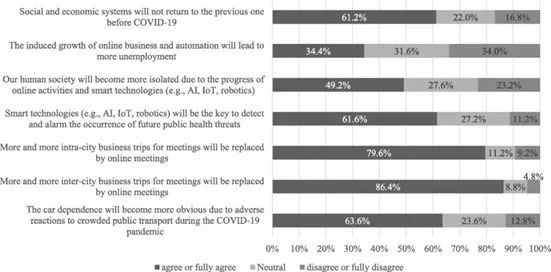
作者:Junyi Zhang, Tao Feng, Jing Kang, Shuangjin Li, Rui Liu, Shuang Ma, Baoxin Zhai, Runsen Zhang, Hongxiang Ding & Taoxing Zhu
The COVID-19 pandemic has caused various impacts on people’s lives, while changes in people’s lives have shown mixed effects on mitigating the spread of the SARS-CoV-2 virus. Understanding how to capture such two-way interactions is crucial, not only to control the pandemic but also to support post-pandemic urban recovery policies. As suggested by the life-oriented approach, the above interactions exist with respect to a variety of life domains, which form a complex behavior system. Through a review of the literature, this paper first points out inconsistent evidence about behavioral factors affecting the spread of COVID-19, and then argues that existing studies on the impacts of COVID-19 on people’s lives have ignored behavioral co-changes in multiple life domains. Furthermore, selected uncertain trends of people’s lives for the post-pandemic recovery are described. Finally, this paper concludes with a summary about “what should be computed?” in Computational Urban Science with respect to how to catch up with delays in the SDGs caused by the COVID-19 pandemic, how to address digital divides and dilemmas of e-society, how to capture behavioral co-changes during the post-pandemic recovery process, and how to better manage post-pandemic recovery policymaking processes.
COVID-19大流行对人们的生活造成了各种影响,而人们生活的变化对减缓SARS-CoV-2病毒的传播产生了不同的影响。了解如何捕捉这种双向互动至关重要,这不仅对控制大流行,而且对支持大流行后的城市恢复政策也至关重要。以生活为导向的观点认为,上述相互作用涉及多个生活领域,形成一个复杂的行为系统。通过文献综述,本文首先指出了行为因素影响COVID-19传播的证据不一致,然后认为现有的关于COVID-19对人们生活影响的研究忽略了多个生活领域中的行为共同变化。此外,还描述了大流行后恢复过程中人们生活的某些不确定趋势。最后,本文总结了在计算城市科学中“应该计算什么?”,以应对如何弥补COVID-19大流行导致的可持续发展目标延迟,如何解决数字鸿沟和电子社会困境,如何捕捉大流行后恢复过程中的共同行为变化,以及如何更好地管理大流行后恢复决策过程。
引用格式:Zhang, J., Feng, T., Kang, J. et al. “What should be computed” for supporting post-pandemic recovery policymaking? A life-oriented perspective. Comput. Urban Sci. 1, 24 (2021).
https://link.springer.com/article/10.1007/s43762-021-00025-8
Computational Urban Science 投稿网址:https://www.editorialmanager.com/cusc/default.aspx
Computational Urban Science 官方网址:https://www.springer.com/journal/43762
敬请关注,欢迎投稿。
文案和编辑:徐健
校对:罗津
审核:林珲、叶信岳
江西师范大学-地理与环境学院
© 2022 Springer, part of Springer Nature.
All Rights Reserved.
https://blog.sciencenet.cn/blog-3432244-1342784.html
上一篇:Climate Action 气候行动 | 特刊开放投稿中
下一篇:中科院天工所:成功创建高效的枯草芽孢杆菌蛋白表达系统